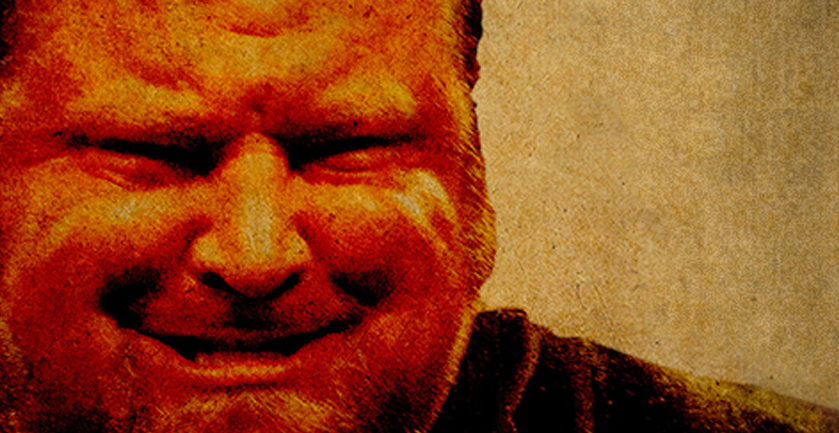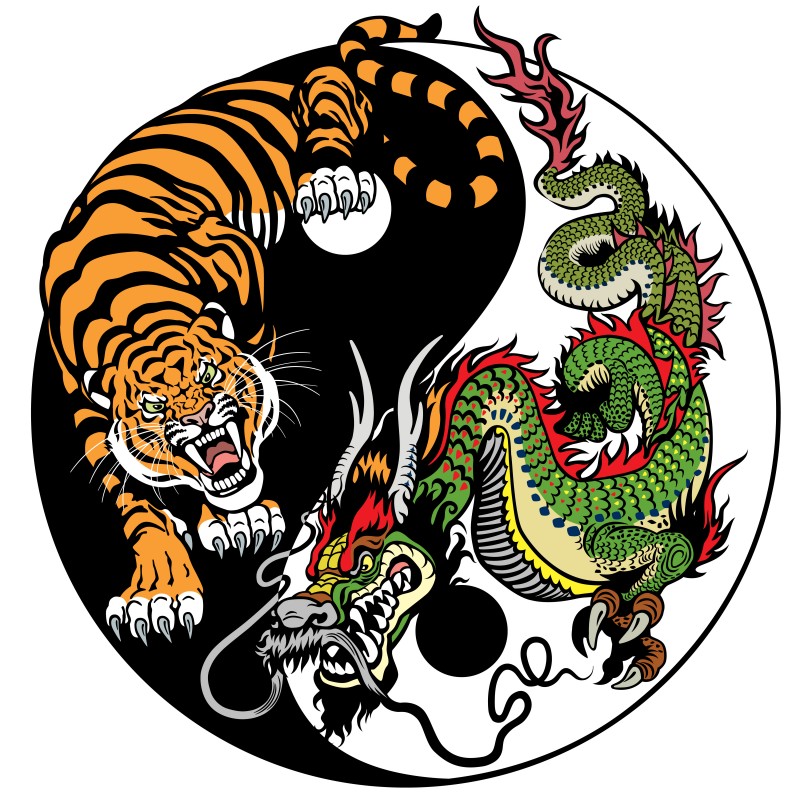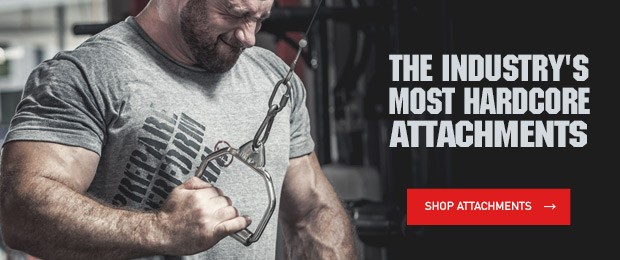
It is inevitable that life changes us, but I see this as a fantastic opportunity to grow. In fact, I believe that it was this willingness to grow that played such a huge part in my success as a lifter. I was willing to learn, experiment, and change to keep progressing. These days, the changes I encounter may be different, but they keep coming, and I keep learning. One major change for me has been the switch from competitor to coach or trainer. This, of course, has put me in some very reflective moods. It has me searching for more information and insight that may help the lifters with whom I work.
RECENT: Intent Is Everything: Does Your Training Have a Purpose?
As of late, I have been thinking a lot about the path a lifter takes as he or she progresses in strength and level of competition. I have been thinking about the changes that lifters have to make to reach the elite level of a sport, as well as the changes they must make to go even beyond that. Finally, I have pondered the changes required to become one of the best in the world, forging new ground and going places no one has ever gone before. I do not believe that a lifter or athlete can go from the beginning to the end of a successful career without undergoing major changes as a person. The key word in this statement is “successful.” Anyone can remain in a field for a long time without changing, and usually, this means that the person remains mediocre at best. To grow, last, and reach the highest levels, growth must take place—even if it never extends to other parts of our lives.
So, what does it take to reach the elite level and beyond? This is such an enormous question with so much depth that I cannot seem to wrap my mind around a short answer to it. I could probably go on for days without ever stating an exact simple answer. The other day, though, I remembered something I had learned while studying Kenpo, and it just keeps popping into my mind every time I contemplate this question. The symbolism of the tiger and the dragon in Kenpo may be the best answer I could ever come up with. They portray the journey that a student of Kenpo should strive to take, but they also do an amazing job of representing my own journey in powerlifting. I thought to myself, why take so much time trying to answer a question that already has a pretty damn good answer!
Image credit: insima © 123rf.com
Picture a tiger with the front of his body turning and a paw scratching up to the sky. Above that, picture a dragon flying above the tiger with his head turned back and down looking at him. This is the classic image I remember from the first time I heard the symbolism of the tiger and the dragon. Of course, many variations exist, some with them fighting. The way it was explained to me is that the tiger represents physical strength and aggression. It is eager to jump in and show its power. It does not have much time for thought or planning; rather, it takes action. It can also represent earthly physical power. The dragon, on the other hand, is older and wiser. Although it still has physical strength, it chooses to rely on its mental and spiritual strength. It has learned the benefits of patience and thought. They are a type of Yin and Yang and, in fact, sometimes are images inside the Yin and Yang symbol.
The tiger represents the beginning students. They begin their training and work hard but do not see much past the physical part of training. They are eager to show their strength and what they have learned. They jump at the chance to test themselves in front of their peers. They leap straight forward into situations, trying to hit everything head on. Meanwhile, the dragon represents the highest level of the martial artist. Although individuals at this level still maintain great physical strength, they have learned that better ways exist. They choose to use their intellectual strength over their physical strength, and they do not rush in. They do not fight head on but rather in more of a circular motion, allowing for greater knowledge of an opponent. Their power comes from within, and they do not feel the need to demonstrate their strength. When they do strike, it is powerful, thought out, controlled, and efficient. It is the goal of a Kenpo student to move from a tiger to a dragon.
I think every sport benefits from incorporating the tiger and the dragon into their training or coaching in some way. For lifters and strength athletes, this hits the nail on the head. Beginning to intermediate lifters fit the ideal of the tiger, and advanced lifters are right in line with the dragon. How do lifters become elite and beyond? They transform themselves from tigers to dragons. In lifting terms, we could say that they transform from meatheads to athletes. Using some of my favorite terms, we can say that they give up working out and start training.
WATCH: Boris Sheiko's Thoughts on Westside Barbell
When I began lifting for football in high school, I was definitely a tiger. I did not spend much time thinking but instead dove headfirst into action. “Lift heavy, get stronger”—that was the extent of my thought process. Every chance I got, I lifted and went balls out. Sure, I read some stuff and tried all kinds of programs, but honestly, I was just looking for new ways to kill myself in the gym. I thought I was such a badass because I lifted with such intensity and aggression. Yes, I worked hard, and that paid off with some strength, but I know now that it was nowhere near the potential I had. To me, strength was aggression and intensity. Whenever gains slowed or whenever I got run down—hell, whenever anything went wrong—the answer was always the same. Go harder, and go more; just keep pushing. In hindsight, I do see some benefits to this, and maybe this is a stage we should go through. It taught me to be tough and to be able to push past almost anything. It built a very strong base for me to work with once I did finally start to evolve. I gained some serious ligament and tendon strength from this type of training, too. I also think that in a way, it helped me to build my mental strength but in a raw form. I visualized a lot to get lifts, and when things got really difficult, I had to use my mental strength to get past the pain. It was very rudimentary physical and mental strength I was gaining, but we start to write by learning the alphabet first, right?
As I became a college athlete, I began to actually learn much more about strength training. This was due to some intelligent coaches (well, at least one), and I think studying in physical therapy boosted my knowledge of strength, too. I was still way more tiger than dragon. I loved pushing super hard every lifting session and still did not give much thought to anything beyond the physical weights. Somehow, I did learn more about programming and fitting strength training into an overall program of an athlete. Unfortunately, due to my chronic compartment syndrome, this lasted only a few years. Then, I was on my own again, pounding weights in my garage. At this time, I had a bit more knowledge than I had gained in high school, and I continued to get stronger, but it was nothing super impressive. I would say the results were equivalent to the amount of hard work I put into my workouts. I still had not expanded my mind from that of a tiger to that of a dragon, and it showed.
By the time I did my first powerlifting meet at 27 years old, my beating the shit out of myself training had gained me a 415-pound raw bench. A year or so later, it gained me a 1700-pound raw total. Not long after this, I realized I did not know enough, so I decided to seek help. Looking back now, I can see this was the point where I was finally ready to start the journey from a tiger to a dragon. Obviously, I did not realize this at the time, nor did I have any idea of the tiger or dragon concept.
This journey from a tiger to a dragon is almost beyond words. It’s the kind of thing that has to be experienced before you can really understand it. I am sure that even if someone would have tried to explain all of this to me back in the day that I would not have given it much thought. I had to experience it over time and could only realize so much at a time. It took years of making mistakes. Endless amounts of injuries and setbacks. Thousands of PRs and even more horrible lifts. It took trials and errors of endless proportions. More successes and failures than I can even remember. It took all of this along with an endurable will to continue on.
It always makes me laugh when unintelligent people assume that strength athletes are meatheads. All of the strongest athletes I know are very intelligent about their sport. Maybe their lives may be a mess, and maybe they don’t function in society so well, but when it comes to their sport, they know what they are doing. You do not become one of the top strength athletes in the world by being a meathead. Some of them may not be able to explain everything using the biggest words or go into insane depth explaining it all, but they know exactly what they are doing because they have been through the transformation from tigers to dragons. They have evolved from the beginning lifters who just think it is about hard work and lifting heavy shit. They have learned and gained knowledge about strength. They have discovered that it is so much more than just hard work and lifting heavy. After years of hard work, study, and learning, they have come to the realization that it really is pretty simple, though, and not as complex as they once thought it was. They have learned mountains of information about strength but now realize they know nothing. They have been enlightened and realize that the most important thing about strength training is to learn how to keep learning. No one standard exists, and everyone reacts differently to different stimuli. Plus, strength levels themselves keep evolving, and this means we are continually being put in uncharted territory. It is an unsolvable riddle that we never get sick of trying to solve.
So, how do I simply state my advice to lifters who are trying to reach the elite level, trying to reach world class, or trying to break world records? Never stop trying to evolve into dragons. Learn to let your ego go so that you never stop learning. Take the time to see the trees, but don’t forget the forest. See every small detail, but don’t forget its place in the big picture. Mostly, just be willing to grow as a lifter, athlete, and person. The knowledge is there and will come to you if you’re willing to accept it.











Thanks for taking time to reply, much appreciated. I am glad you enjoyed it and where able to take something away from your time reading it!
Thanks,
Chad